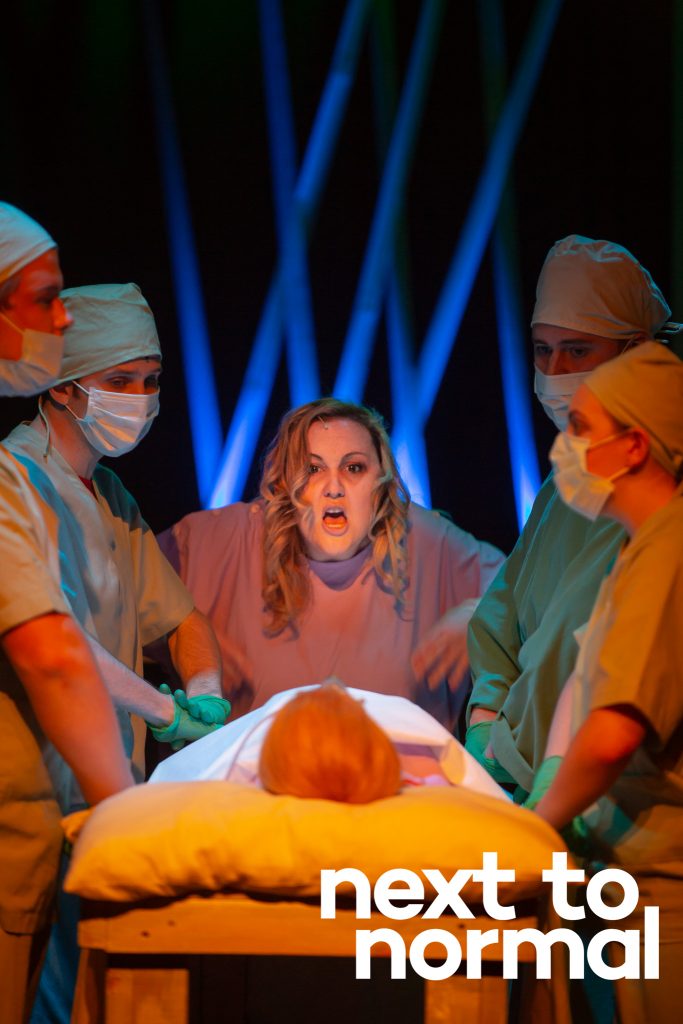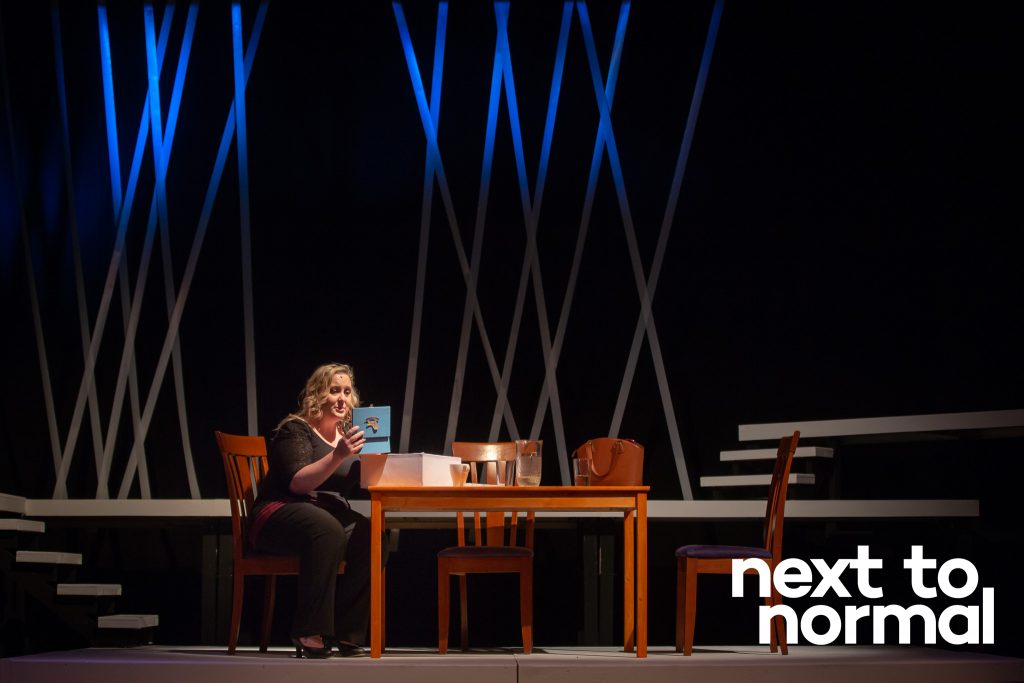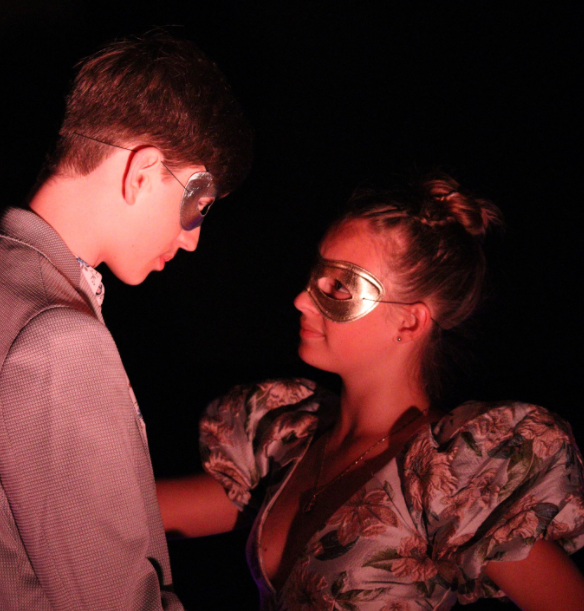
‘Next to Normal’ // Brisbane Arts Theatre
‘Next to Normal’ was tear-jerking.
Brisbane Arts Theatre has delivered a rendition of ‘Next to Normal’ that can only be described as moving. Directed by David Harrison, ‘Next to Normal’ is not a musical for the light-hearted. It follows a family through their diverse responses to grief, mental illness, and the question of normality. There was barely a dry eye in the audience, due to the sincerity with which the performers embodied the plight of their characters. The professionalism of the cast extended beyond their depictions, as they pushed through and masked technical challenges. Meanwhile, the theme of averageness, or the mundane, permeated the shows aesthetic components and created a striking contrast to the dramatic plot.
The leading cast of ‘Next to Normal’ gave conscientious and realistic performances in what Broadway World described as “the most challenging roles on Broadway”. Carly Skelton was moving as Diana Goodman, with the vocal chops to pull off the elaborate score. Whilst the microphones sometimes failed to do her voice justice, she managed some powerful belts and maintained her character’s tormented and heartbroken persona throughout. Adam Bartlett, as Dan Goodman, delivered strong masculine vocals that blended with Skelton’s beautifully. Hannah Kassulke, as Natalie Goodman, portrayed the modern teenager from a fragile family unit with diligence, and the chemistry between herself and Tristan Ham, as Henry, was heartwarming. Christopher Batkin, reprising his role as Gabe Goodman, brought a level of innocence to the character, whilst ensuring his character moved with a ghostly disposition.
A major highlight of the show was Isaac Tibbs, as Doctor Madden and Fine, who gave a striking vocal performance, invoking his beautiful vibrato, and range to match. Tibbs delivered both characters as elegant and poised, creating a strong contrast with the often distraught and dishevelled Diana Goodman.
Whilst the overall show was tight, there were standout moments where the actors most connected with their characters and broke the audience emotionally. At a crucial point in the story for her character, Skelton’s Diana, had an eerie interaction with a music box that was both poignant and unnerving. Bartlett and Batkin, as Dan and Gabe respectively, shared a moment during which Dan began to deal with his own feelings about their family situation. The explosion of emotion shed light on the complexity and diversity of internal experiences the grieving father was facing, and both men did this such justice.
Live performance comes with its challenges, and unfortunately, the sound and lighting sometimes failed to meet the standard set by other facets of the show. With the sound, there was often an imbalance between the vocals and the band, making it difficult to hear the lyrics which are crucial to the storytelling in this particular musical. However, the cast and crew pushed through with professionalism and were able to reconnect with audiences when the audio returned to balance. At times lighting cues fell short, leaving characters in darkness or with shadows, but these did improve as the show progressed.
There was a clever use of LED strips and floor lights which were quite effective in shifting the mood with a change of colouring, as well as alienating certain characters when the moment called for it. Other than these lighting components, there was nothing particularly innovative within this production of Next to Normal. In fact, it remained within the boundaries clearly defined by professional renditions, taking few risks with characters, sets or costuming.
The theme of normalness, reflected in the shows apt title, was deeply embedded in the aesthetic components of this production, most notably the costume and set. The characters were provided with an air of anonymity with their attire. Plain shirts, basic jeans and run of the mill hairstyles gave the impression that if they were people walking down the street, no one would look twice. The set was minimalist, with a colour scheme that was simple black and white tones. The only furniture was that of a simple wooden dining set. These aspects considered, the set designed presented a neutral space for the performance to take place. This notion of neutrality, the ordinary or normality bled through the aesthetics of the entire production and allowed for a strong contrast to the secondary theme of mental illness which permeated Diana Goodman’s story. The dedication to normality in the costuming and sets may have been intended to shed light on the commonness of mental illness, or, perhaps simultaneously, to express the abstract and diverse nature of normality.
Whilst the complex and distressing nature of the content may deter some viewers, ‘Next to Normal’ has a beautifully written score and book. Brisbane Arts Theatre has produced a quality rendition with a capable cast and moving moments.
‘Next to Normal’ performs until Saturday, 23 March 2019 at Brisbane Arts Theatre. Tickets are available from https://www.artstheatre.com.au/nexttonormal










